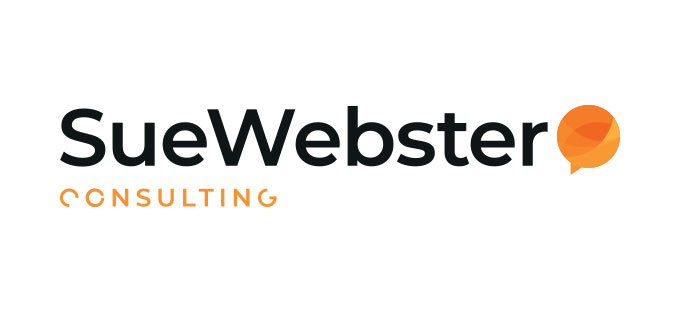Struggling to make change? Here’s some science that will help..
Many people say that the only constant is change, but I disagree!
When it comes to career or organisational change, it seems the one constant in change is how hard it is to make it happen.
I know for myself and for many of my clients that a big part of deciding to make change seems to be procrastination, rumination and idea gestation, until at some point you say – enough is enough!
I have always been curious about why this happens. Have you ever noticed in your own behaviour, that no matter how committed you are to change it always seems harder and takes longer than you want?
Resolution to change is the starting point
When I resolve to make a change in my life I go into ‘research and plan’ mode.
I typically mind map the change, decide what needs to be done, add some activities to my next actions list and, often, that’s where it grinds to a halt.
It can sit on my task list nagging me for sometimes a week, a month or more. It’s as if it has to filter into my subconscious to mull over before I act.
For example, writing this blog took a while and then incorporating some constructive feedback from a valued colleague took longer.
So what’s going on here?
Fear creates resistance
Here’s part of the science part of change.
Our prefrontal cortex in the brain is responsible for planning, decision making and moderating behaviour. It is wired to continuously scan for threats.
Any change, if seen as a threat, will divert resources in the prefrontal cortex to focus on it until the threat passes. In the workplace for example, if employees perceive any change as a threat to their daily habits, status quo and their workplace in general, productivity and performance will suffer.
Using my example of blogging regularly I was aware that fear of failure had crept in – ‘Am I good enough?’ ‘If I fail, can I deal with the negative feedback?’ I saw the feedback as a threat. These seeds of doubt instantly set up resistance to the change. I tried to be open to any doubts and explore them.
I saw a similar example of resistance when I was recently the change manager on the rollout of a new IT system.
We sent the 500 existing users new login details and what we thought were clear instructions on next steps. We tracked that about 90% of users received and opened the email.
However, many of them called the contact centre two or three times to ask about their new login details. Many said they hadn’t received them, even though the stats said otherwise.
Often they just wanted to complain about the new system even though the benefits were substantial i.e. an easier to use cloud based system providing enhanced tracking and reporting capability. Much of the resistance was from fear of being less productive and, as a result, earning less money during that period.
What’s an effective way to manage this change?
Lean in
In an organisation for example, a key to managing successful change is to prepare leaders to be honest, empathetic and transparent.
It is also important to acknowledge the change and treat people with respect. The aim is to make the change as rewarding as possible.
So think deeply about the threats that could be triggered in the prefrontal cortex.
The best source of information about the changes are the people directly impacted and their team managers who can make or break a change.
It’s important to ask fundamental questions such as:
- What do people feel that they are losing?
- What will they gain?
- How clear is to them about what will change and when?
Use the growth mindset
Any person or organisation making a change needs to approach it with a growth mindset by asking how can I learn and grow from this opportunity?
So when I received the feedback I was mindful of my negativity, leant in, trusted the process and gave it my best shot. As a result, I relished reworking the content and I learnt a lot in the process about finding my voice and being authentic.
In the corporate setting, when taking calls about the system implementation, instead of being defensive I started really listening, empathising and addressing the users’ concerns. I had open and honest dialogue and quickly followed up any promises made. Within a month most of the users were enjoying using the new system and finding ways to be more productive and swapping tips and tricks online.
Don’t underestimate the impact of change
The human impact of change is often under estimated and the emotional journey often not acknowledged.
Continuous relationship building and good communication are both part of a powerful change strategy. The key to successful change is behavioural – people need to do things differently and embrace it over time. Our brains like habit and routine and it takes the brain a lot of effort to develop new habits. So be mindful of this and walk in others’ shoes for a while.
Don’t be so hard on yourself if you are struggling to make it happen as quickly as you wish.
I find the results gratifying when I work through the resistance while acknowledging it’s there. I also find that during an organisational change you need to be respectful and mindful of everyone’s varying capacity and appetite for your change.
Adopt the growth mindset
Both organisational and individual change takes time but using the growth mindset developed Carol Dweck, Professor of Psychology at Stanford University can be fun and fruitful.
The research only tells us what works for some people or organisations, some of the time.
It is important to help people explore what works best for them to change, make change stick and measure and share the impact in the workplace.
We need to learn ways to sustain the behaviours that create our desired outcomes.
To develop a growth mindset you need to focus on learning and improving, work hard, be persistent and reflect on strategies that work or don’t work.
About Sue Webster
I work with both organizations and individuals to help them navigate the challenging process of change.
For the past 15 years I have worked with some of Australia’s largest and most complex organizations on high-profile and business-critical changes across systems, software and people and processes. Along the way I have coached senior and middle management to help guide them along a path that makes change more satisfying for themselves and their teams.
All my coaching work is informed by my passion for understanding how our brains work when confronted with change, particularly the area of neuroplasticity. I also help clients assess their strengths and challenges and apply this knowledge to their careers. This knowledge may lead a client to changing or re-crafting their career.




Leave a Reply
Want to join the discussion?Feel free to contribute!